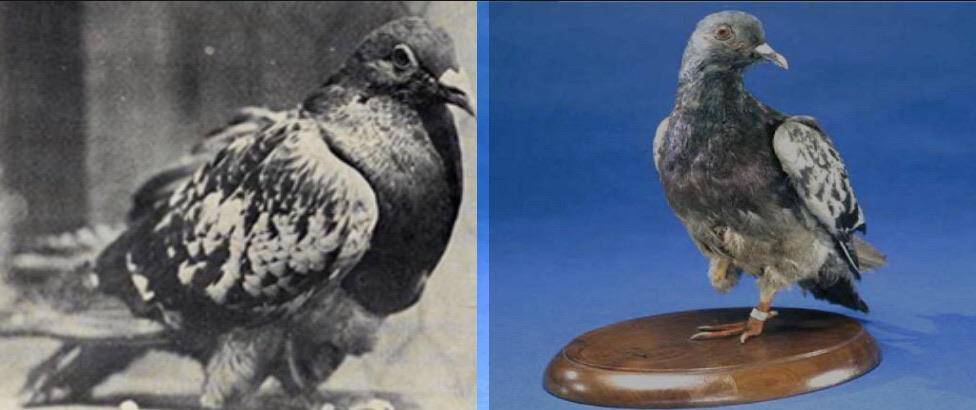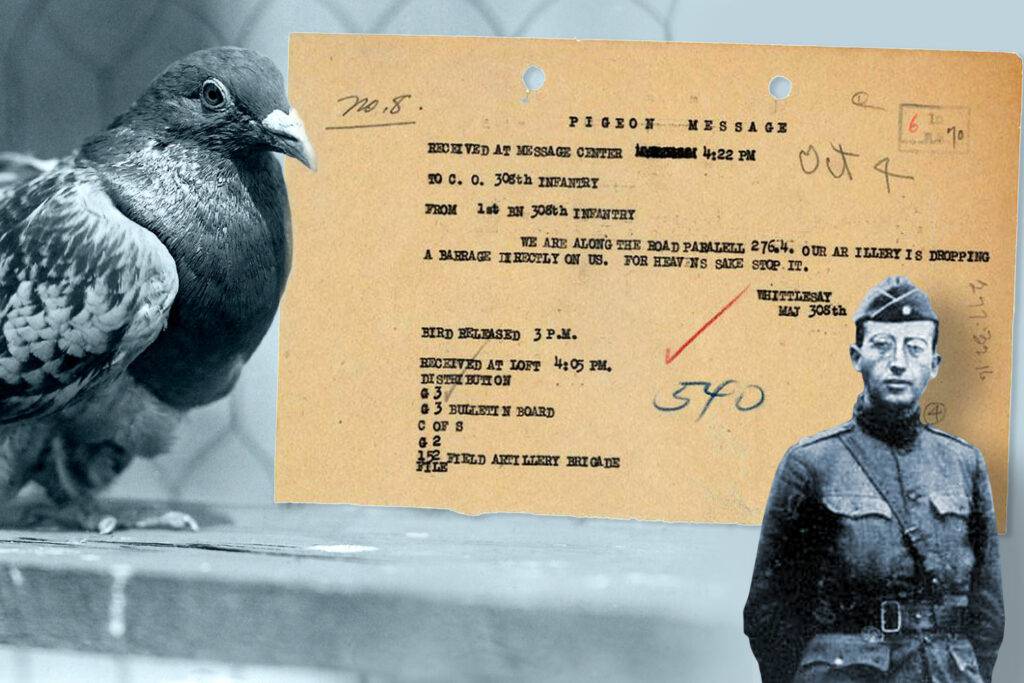Cher Ami, the war pigeon

In the epic chronicles of wartime bravery, one name that stands out is Cher Ami, the homing pigeon whose indomitable spirit and courage transcended the horrors of World War I.
Cher Ami’s Crucial Role in the Battle of Verdun
Cher Ami, a pigeon in the U.S. Army Signal Corps, found itself at the forefront of one of the war’s most critical moments: the Battle of Verdun in October 1918. Major Charles White Whittlesey and his men, more than 550 strong, were trapped behind enemy lines, desperate for aid. With conventional communication disrupted, Cher Ami’s wings bore the weight of a crucial mission—to deliver messages that could mean the difference between life and death for the besieged battalion.
Messages of Desperation and Hope
In the face of relentless enemy fire, Cher Ami embarked on a series of perilous missions. Shot down twice while carrying urgent messages pleading for support and relief, the resilient pigeon persevered. One can only imagine the urgency conveyed in the notes strapped to its leg, written on onion paper, the desperate pleas for evacuation and the sufferings endured by Whittlesey’s men.

Cher Ami’s Heroic Return – A Feathered Beacon of Hope
In an astonishing display of determination, Cher Ami defied the odds, flying through enemy fire to return home with vital messages. Despite being shot through the breast, blinded in one eye, and with a leg hanging by a tendon, the one-legged hero covered the distance of 25 miles in a mere 25 minutes. His arrival at division headquarters marked not only the salvation of 194 survivors but also the birth of a legend within the 77th Infantry Division.
Cher Ami’s Recognition – Awards and Honors
Cher Ami’s bravery did not go unnoticed. The pigeon was awarded the Croix de Guerre Medal with a palm Oak Leaf Cluster for delivering 12 crucial messages during the Battle of Verdun. His heroic service extended beyond the battlefield, earning him a well-deserved place in the Racing Pigeon Hall of Fame in 1931. The Organized Bodies of American Racing Pigeon Fanciers also bestowed upon him a gold medal in recognition of his unparalleled service during World War I.
Cher Ami’s Post-War Journey – From Battlefield to Museum Display
After surviving the perils of war, Cher Ami’s journey continued. His body, turned over to a taxidermist at the Natural History Museum, found a final resting place in the Smithsonian’s Arts and Industries Building in June 1921. For over a century, Cher Ami has been a symbol of survival, hope, and perseverance, currently on display in the National Museum of American History, showcasing the enduring impact of a feathered hero.
Legacy and Reflection – Cher Ami, An Emblem of Courage
As we reflect on Cher Ami’s remarkable tale, we recognize that his legacy extends far beyond the battlefield. His story, etched into the history of war, underscores the profound connections between humans and animals. Cher Ami’s unwavering determination, resilience, and sacrifice serve as an enduring emblem of courage, a testament to the extraordinary roles played by our feathered companions in times of turmoil.










